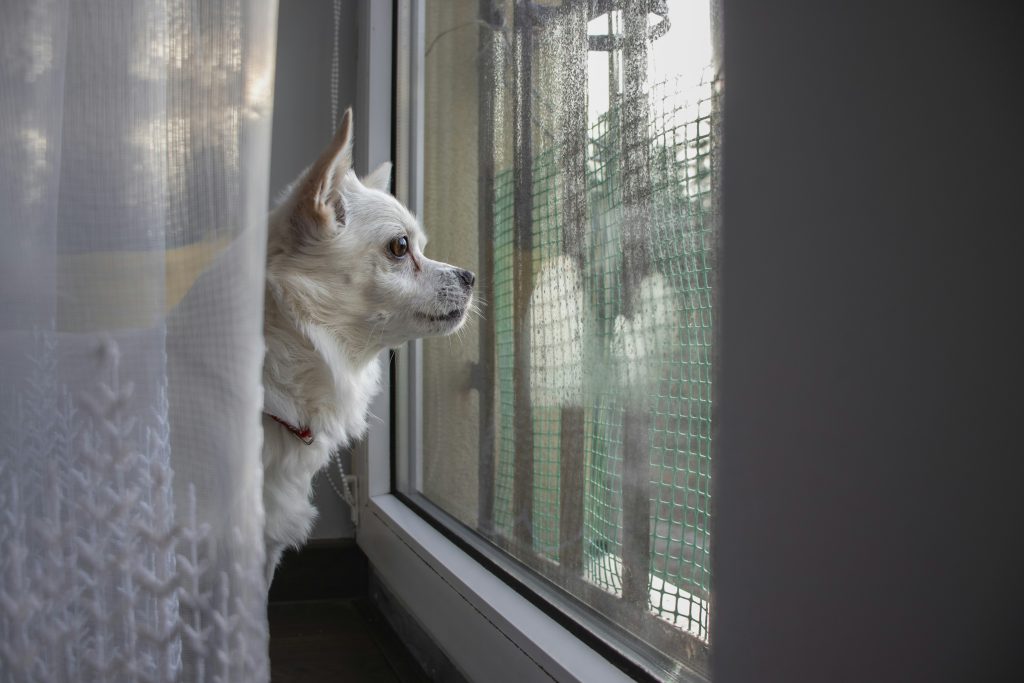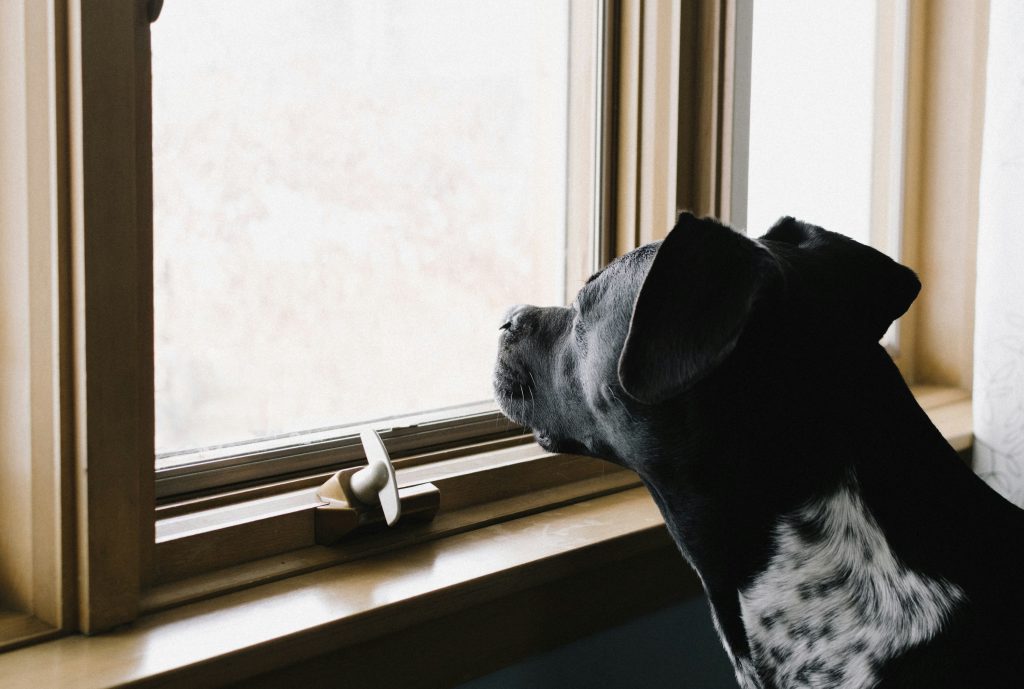What Your Dog Sees From the Window
As your dog gazes out the window, eyes wide and tail twitching, have you ever wondered—what exactly are they seeing? Are they captivated by the same things you notice, or is their world entirely different from ours?
To truly understand why dogs love looking out the window, it helps to step into their shoes—or rather, their paws—and explore how they see the world.
1. How Dog Vision Works
Dogs don’t see the world in black and white, but their vision is different from ours in a few key ways:
-
Color Perception: Dogs are dichromatic, meaning they see two primary colors—blue and yellow. They have trouble distinguishing between red and green. So, a bright red car or a green lawn may look like different shades of gray or yellowish-brown to them.
-
Motion Detection: One of a dog’s greatest visual strengths is their ability to detect motion. Dogs are extremely sensitive to quick movements, especially at a distance. That’s why your dog might bark at a jogger two blocks away but ignore a still parked car nearby.
-
Visual Acuity: Dogs have less sharpness in their vision compared to humans. A dog’s eyesight is estimated to be about 20/75 to 20/100. This means what we see clearly at 75 feet, they’d need to be 20 feet away to see similarly.
-
Peripheral Vision: Thanks to the placement of their eyes, dogs have a wider field of view—up to 250 degrees compared to our 190 degrees. This means they can detect movement far out to the sides, which helps them scan their territory from a single vantage point.
2. Sights That Draw Their Attention
Given their visual strengths, dogs are most attracted to things that move quickly or erratically, such as:
-
Squirrels and birds darting across the yard
-
People walking or running past the house
-
Other dogs trotting along the sidewalk
-
Delivery trucks or bicycles in motion
-
Leaves blowing in the wind
Because their eyes are tuned to detect motion over detail, your dog may seem more interested in a distant moving dog than a nearby person standing still.
3. Height and Vantage Point Matter
From their position at the window, your dog often gains a rare elevated view of their surroundings. This perspective gives them a better vantage point than when they’re walking on the ground.
If you’ve ever noticed your dog standing on the couch or stretching tall at a window ledge, they’re trying to maximize their field of view. They instinctively know that the higher their eye level, the better they can monitor movement in the distance.
4. Pairing Sight with Sound and Smell
While vision plays a role, your dog’s experience at the window is multi-sensory:
-
They hear the delivery truck long before it comes into view.
-
They smell the neighbor grilling burgers even if they’re out of sight.
-
They see the mail carrier approaching and pair it with a daily scent.
This sensory combination gives them a richer interpretation of what’s happening. The visual scene is just one part of a layered experience that informs your dog’s understanding of the world.
5. Time of Day Makes a Difference
Dogs perceive changes in lighting differently. While they don’t see detail as well in bright daylight, their night vision is superior to ours.
If your dog enjoys window-watching at dawn or dusk, it’s likely because their eyes are more comfortable in dimmer lighting. Their retinas contain more rod cells, which are responsible for low-light vision, making it easier for them to spot movement in shadows or at night.
6. Facial Recognition from Afar
You might be surprised to learn that dogs can recognize familiar faces at a distance—even through glass. Though their vision isn’t crystal clear, they use a combination of shape, scent memory, and movement patterns to identify people or pets they know.
This means when your dog gets excited before you even pull into the driveway, they’re not guessing—they know it’s you.
7. Watching for Patterns and Routine
Dogs are masters of routine. If the same dog walker passes your house every day at 4 p.m., your pup will likely recognize them—even if it’s from several houses away.
What’s more, they start to anticipate these daily moments. That’s why your dog might start sitting by the window at the same time each day, ready for their “scheduled show.”
Final Thoughts
When your dog is staring out the window, they’re not just passing time—they’re actively engaging with their world. Their vision may be less sharp than ours, but it’s incredibly attuned to motion, pattern, and meaningful activity.
By understanding what and how your dog sees, you gain deeper insight into why they enjoy this pastime so much. The window is a portal into a world full of motion, sound, scent, and learning—a source of constant entertainment and enrichment.
So, the next time your dog is posted up at the window, remember: they’re not just looking. They’re watching, analyzing, and enjoying their very own version of canine television.



